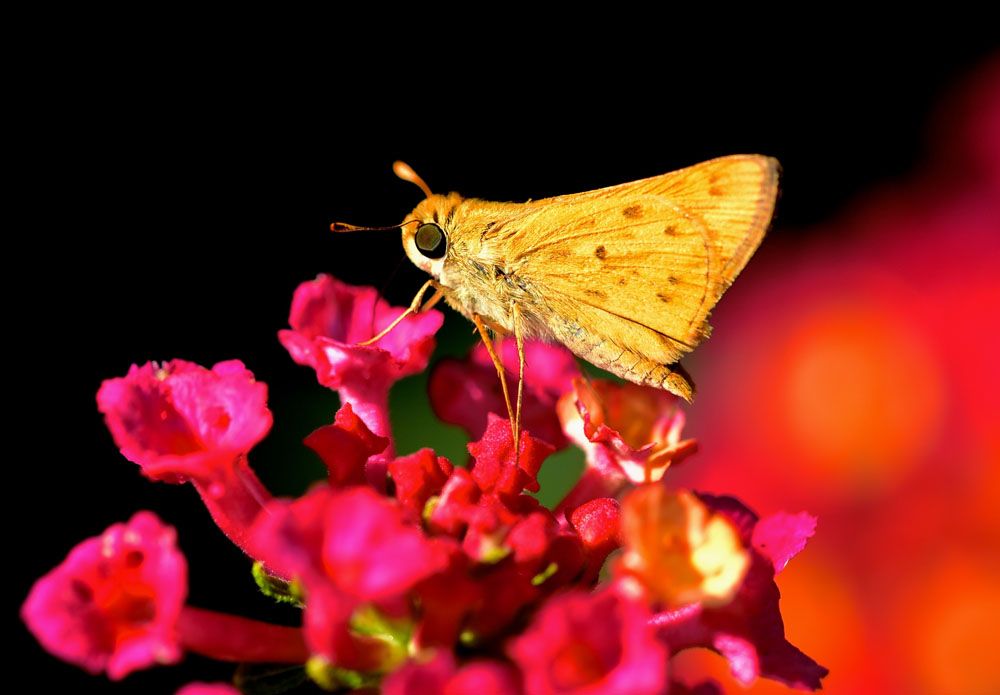
Fiery Skipper – Hylephila phyleus
Fiery Skipper – Hylephila phyleus
Common Name: Fiery Skipper
Latin Name: Hylephila phyleus
Appearance:
- Fiery skippers are distinguished by their very small antennas. They are just around half the length of the forewing. Males are flaming orange/yellow with a zigzagged border and a huge black stigma (a gland used to secrete pheromones) on the forewing, while females are yellowish-brown with little dark dots. Their wingspans range from 1.0 to 1.25 inches, with females somewhat bigger.
- Fiery skipper larvae are tan in color and heavily coated with short hairs. They feature three black lateral stripes and a huge, dark head that seems to be segmented from the rest of the body.
- The eggs are hemispherically formed, shiny, and pale turquoise/green.
- The chrysalis of a flaming skipper is light brown, with a black dorsal line running from end to end.
